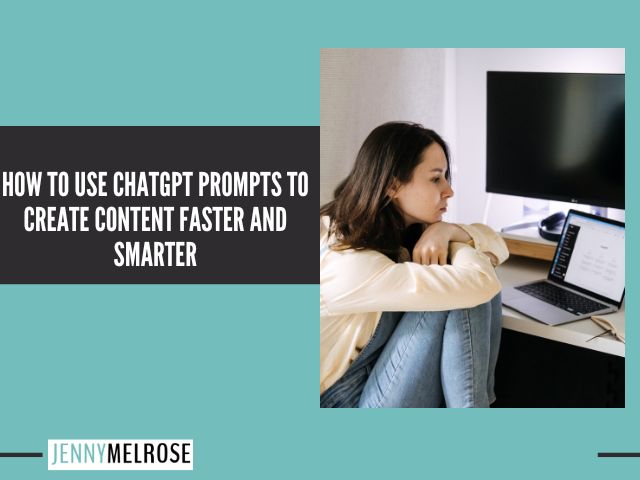ChatGPT has revolutionized content creation for entrepreneurs and influencers, offering a powerful tool that can help scale your business without sacrificing your authentic voice.
IE 446: How to Use ChatGPT Prompts to Create Content Faster and Smarter

Many content creators approach AI with apprehension, fearing it might replace their unique contributions or diminish the personal connection they’ve built with their audience.
However, this perspective misses the transformative potential of tools like ChatGPT when used strategically.
Rather than viewing AI as a replacement, we should embrace it as a productivity multiplier—essentially a digital assistant that can help us research, organize, and expand our ideas while we focus on adding the personal touches that make our content uniquely valuable.
The Anatomy of an Effective Prompt
When approaching ChatGPT for content creation, it’s essential to understand what makes an effective prompt.
The quality of output you receive depends heavily on the specificity and clarity of your input.
An effective prompt requires three key elements: specific context about what you’re trying to achieve, clear instructions about the format and length you desire, and guidance about the tone you want the content to have.
Before diving into prompts, however, it’s crucial to “train” your AI by feeding it information about your business, customer journey, and existing content.
This helps ChatGPT understand your voice and audience, resulting in more personalized responses that align with your brand. I recommend uploading PDFs of your digital products or linking to blog posts so the AI can analyze your writing style and subject matter expertise.
5 Powerful Ways to Use ChatGPT for Content Creation
1. Brainstorming Content Ideas
First, use it for brainstorming and research—ask specific questions about what your audience might be interested in based on keywords you’ve already researched.
2. Creating Blog Post Outlines
Second, request outlines for content pieces, which you can then flesh out with your personal experiences, stories, and insights.
This approach maintains your authentic voice while giving you a structural framework to build upon.
3. Writing Social Media Captions
Third, utilize ChatGPT to create social media content based on articles, videos, or podcast episodes you’ve already produced, ensuring consistency across platforms.
4. Repurposing Existing Content
Fourth, repurpose existing content by feeding transcripts from videos or podcasts and asking for them to be reformatted into blog posts with SEO-friendly headings.
5. Planning a Content Calendar
Finally, request customized content plans that align with your publishing schedule and core content pillars, creating a roadmap for consistent content creation.
Tips for Getting Better Results from ChatGPT
To maximize your results with ChatGPT, I recommend several practical strategies.
Don’t settle for the first response—refine your prompts iteratively to get exactly what you need.
For example, if you request a three-sentence email and aren’t satisfied with the results, follow up with a more specific prompt asking for a stronger call-to-action that leads to a particular product or service.
Keep track of prompts that work well for you; I maintain a Google Doc of effective prompts that I can reuse and adapt for future content.
Always ensure that the content serves your overall purpose by including strong calls-to-action that align with your business objectives.
Perhaps most importantly, remember that ChatGPT should primarily be used for research, outlining, and repurposing your original ideas—not generating the core insights that make your content valuable.
The critical distinction for ethical and effective use of AI in content creation lies in preserving your personalized voice and expertise.
I never ask ChatGPT to create original blog posts from scratch because those wouldn’t reflect my unique ideas, experiences, and knowledge of what works for my clients.
Instead, I use it to create content based on transcripts of podcasts or videos where I’ve already shared my personal insights.
This ensures that the AI is organizing and reformatting my original thoughts rather than generating generic content that could belong to anyone.
By focusing on using ChatGPT for outlines, research, and repurposing while infusing your content with personal stories and case studies, you maintain the authentic connection with your audience that distinguishes your brand.
Embrace AI as a tool that amplifies your voice rather than replaces it, and you’ll discover a powerful ally in scaling your content creation while preserving the unique value only you can provide.


